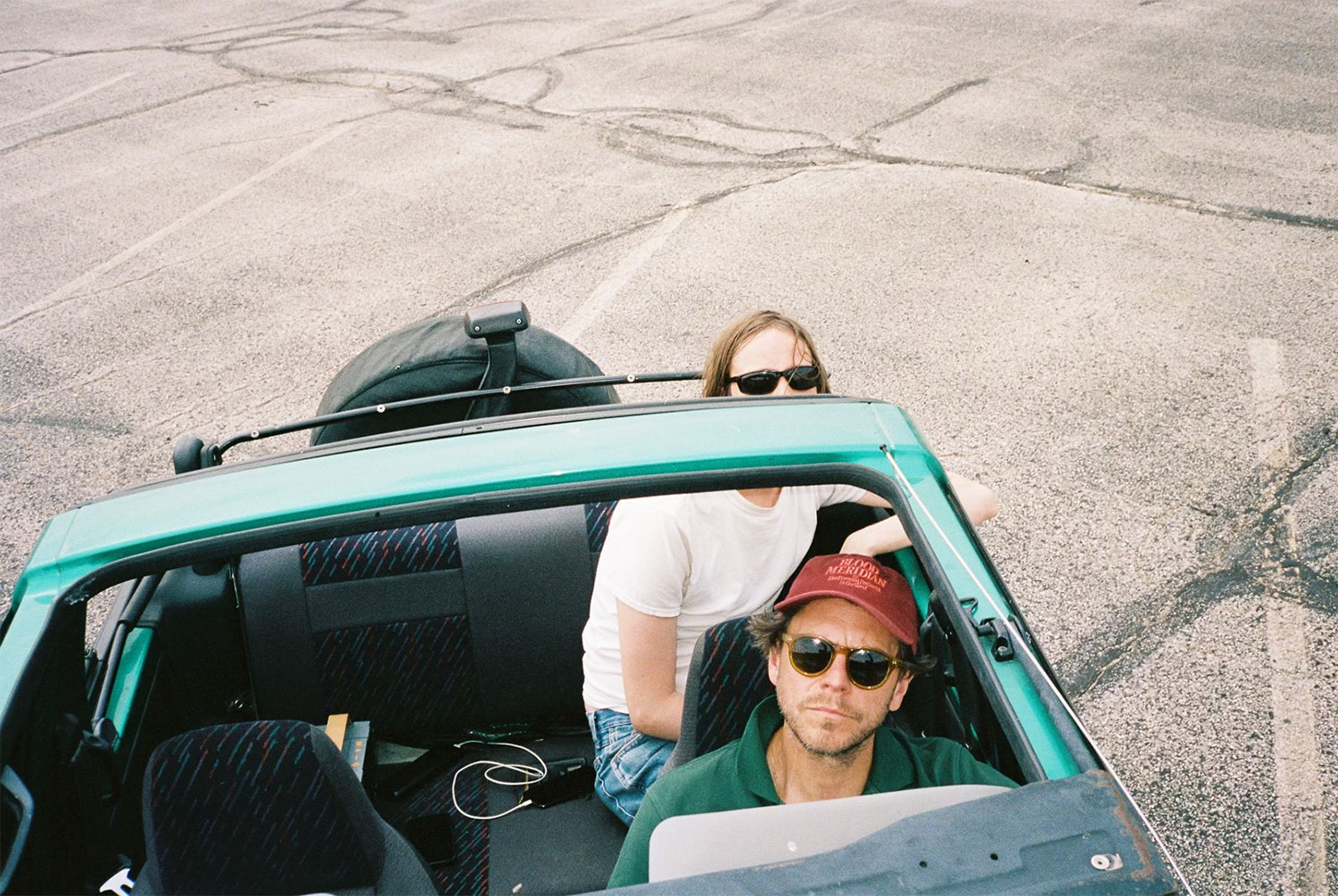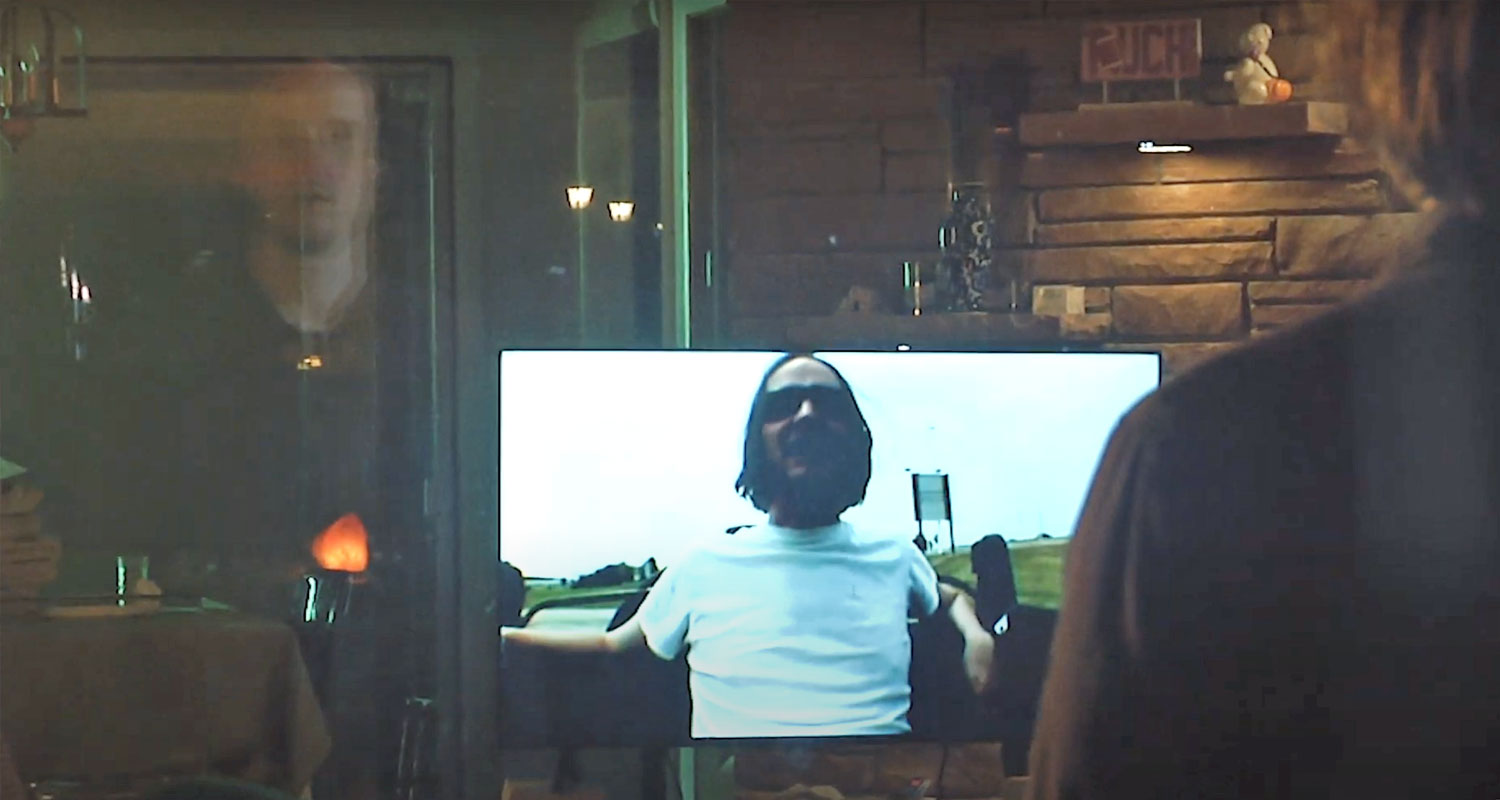It’s been one year since New-York-by-way-of-Milwaukee musician John Chiaverina called it a day on his long-running Juiceboxxx project. “Juiceboxxx was an exercise in believing in myself despite everything,” Chiaverina told us at the time. “It gave me a reason to live. I did it for 20 years. I don’t know what is next, but I can’t stop writing songs and being creative.”
What’s next is Rustbelt, a new musical moniker/project which finds Chiaverina taking a more pop-informed route while still grappling with many of the same issues he did during his Juiceboxxx days: the price of living a restless and unconventional artistic life, and wondering if that price—and that life—is worth it. “I doubled down on being a clown / Another tedious cultural round,” Chiaverina laments on 2022’s “Fade The Mix.” “It’s easy to tell ’em fuck it all / But whatcha gonna do when the curators call?”
Now, one year, one eponymous EP, one Promise Ring cover, and one cathartic live performance at the 2022 Bay View Bash later, Chiaverina is back with a new Rustbelt video, “Oh My God Here It Comes Now.” Directed by another Milwaukee legend—now-Los-Angeles-based filmmaker Sam Macon—the deceptively lo-fi video depicts Chiaverina occupying several layers of reality at once, watching different versions of himself play out on a TV screen or through a suburban window. “We talked about our lives and the kind of confusion that comes from continuing to strive for something without completely knowing where it is going or why it matters,” Chiaverina tells us about his collaboration with Macon. “Like the song itself, it imagines different narratives—alternate timelines.”
Watch the video below, and read an extended Q&A with Chiaverina and Macon below that.
Milwaukee Record: Tell me how the two of you got together for this video. John, were you familiar with Sam through his history in Milwaukee music? Sam, were you familiar with Juiceboxxx?
John Chiaverina: In the late ’90s, Sam and his friend Dan Ollman made a compilation VHS of live ska music called Bumpin’ Uglies. This tape was extremely important to me as a 12-year-old. I wish I still had it. I wish that shit was on YouTube. I also have a memory of Sam giving me a flyer for that legendary Black Dice/The Rapture/Since By Man/Mistreaters show at Bremen House. Sadly, I was not able to attend. Of course, I have great memories of seeing Since By Man at community centers and basements around Milwaukee.
Sam Macon: I believe I met John, a.k.a. Rustbelt, a.k.a. Juiceboxx (RIP) when he was around 11 years old. Little did I know then that John and I would become friends a few years later when often sharing sweaty basements, community centers, and venues while rocking out to the vibrant Milwaukee music scene of the early ’00s. Early on, I clocked and appreciated John’s assessment of/engagement with the scene as a whole and just found him to be a really smart and interesting dude. As John’s Juiceboxxx project became a sensation of sorts, I, like so many others, watched on in extreme fascination as he consistently defied expectations and reached beyond genre trappings.
MR: I understand there’s an unlikely family/teacher connection between the two of you?
JC: Yeah, my dad was Sam’s high school photography teacher. To this day, he holds Sam and Dan in high regard. I recently found out, too, that my dad had Graham Hunt in class. A lot of heads went through those Nicolet halls.
SM: Mr. Chiaverina—a wonderful guy who had a really positive influence on my creative development, sense of purpose, and love for the visual arts—saw my friends and me as Nicolet High School’s resident authority on rebellious music-based subcultures of the late ’90s and essentially asked me if his son was going to become a degenerate satan worshiper because he was getting into whatever the hell music it was that we were into. I met John and rightfully assessed he was a good boy despite listening to music that wasn’t for everyone (ska), and that he would grow up to be a contributing member of society.
MR: Before we get to the video, John, can you talk about the song, “Oh My God Here It Comes Now”? It touches on a lot of themes you’ve touched on before: the hustle and exhaustion of chasing your dreams, and wondering if you’ve wasted your life in the process. But it still acknowledges the power and pull that music has over us.
JC: I think I’m trying to give myself a bit more “narrative freedom” with this project. I guess I’m in a sort of transitional phase of my life, so that naturally leads me to look back and forward at the same time. I often think about where my life could go, or where it could’ve gone. I don’t know, I listen to a lot of John Cougar Mellencamp.
SM: As an outside observer, it seems that Rustbelt has a set of operating principles and an overarching aesthetic that goes beyond the music. Now, what those guiding principles or “vibes” are precisely, is for John to say. But as his collaborator, I was drawn to his interest in a very, very specific and hard-to-totally pin-down sense of Midwestern decline (as opposed to decay), overconsumption, and the sense that things are on a downward slope without being super nostalgic or overly reverential to the past.
MR: As for the video, tell me about the concept. There’s obviously a lot going on here, with multiple levels of reality and a sense of watching your life from the outside looking in. Was it something that you had in mind, John? Was it something that the two of you collaborated on?
JC: We talked about our lives and the kind of confusion that comes from continuing to strive for something without completely knowing where it is going or why it matters. Again, like the song itself, it imagines different narratives—alternate timelines. The germ of the concept comes from me walking around Riverwest a few years ago and peering into a window of a house with a TV blasting. It was an image that stuck with me.
SM: As John and I were brainstorming for the video we essentially started with, “Let’s shoot out by the airport.” That was then paired early on with John’s idea of the video playing on a TV with him watching himself from outside of a more conventional suburban home. Then the other John (who is perhaps an alternate timeline John who was never Juiceboxxx at all?) came along and sat on the couch and all of it adds up to something that I will leave for the viewer to decipher. Or it doesn’t. As with most good things, one’s mileage may vary.

Photo: Erik Ljung
MR: Technically, it seems like a very lo-fi video, yet there are some obvious camera tricks involved. How did you pull this off, Sam?
SM: I was interested in using antiquated technology—miniDV video for example—in a way that was visually interesting and smart as opposed to romantic or nostalgic. I know “the kids” are having a bit of a love affair with a certain era of early aughts video technology and I love that for them, but miniDV looks like complete shit. I had a visceral response to using the cameras and viewing the footage as we created what we call VIDEO 1.
VIDEO 1 was shot over a Friday night and Saturday day with the help of local legends, Sean Williamson as art director and Erik Ljung as DP. Our first camera, borrowed from another local legend John McGuire, broke and we had to crack it open to rescue a day and a half of footage. We then had to find a different 20-year-old camera on the spot. Erik reached out to yet another local legend, Brema Brema, who was kind enough to lend us his camera. We wrapped out VIDEO 1 and handed off the footage to Gerry Hartman (a burgeoning local legend) who cut the whole thing by pulling an all-nighter. Shout out to Dean Hartman of Peck School of the Arts for letting us use his office/temporary editing suite!
We knew we wanted to do a multi-format thing across VIDEO 1 and VIDEO 2 from the earliest brainstorms. We first thought about shooting 2 on film, but that didn’t seem right. John really zeroed in on this highly specific era of early HD video of the later aughts. SO, we tracked down another less old, but still antiquated, camera with the help of Bob Donnelly of North American Camera. A beloved institution run by a local legend.
All of VIDEO 2 was shot Sunday night at my sister’s house in Fox Point (shout out familial legend Hannah!) with the help of Tony Porter, whom I’ve only recently met but seems like a legend to me. Then the whole shebang was handed over to editor-extraordinaire Eric Arsnow (legend) of Funland Studios (a new but soon-to-be beloved institution) who proceeded to edit this all together with a few little post-effects and tweaks to make the whole thing come together.
There was something serendipitous, lovely, and quite fitting about shooting this video this way for a song of John’s that explores the ideas of wasted lives, dead ends, and pop-music-fueled salvation. The irony is not lost on me that if we all hadn’t “wasted” so much of our lives making art/music/whatever then we wouldn’t have had the opportunity to make new weird things like this video after 20-plus years of friendship.

MR: What’s next for you, John? Any new songs or shows set for this summer or the rest of the year? How about you, Sam?
JC: I’m working on a variety of projects that may or may not see the light of day. I would love to do another live Rustbelt set at some point. More singles coming in the fall. Oh, yeah, I do this music newsletter twice a week. It’s kind of low-key, but I’m also kind of proud of it.
SM: Directing another music video or two, shooting some commercials, and prepping for my first narrative feature. Also listening to Rustbelt. Also, my wife and I are having a kid in October!
Exclusive articles, podcasts, and more. Support Milwaukee Record on Patreon.
RELATED ARTICLES
• Listen to RUSTBELT cover The Promise Ring’s “Nothing Feels Good”

